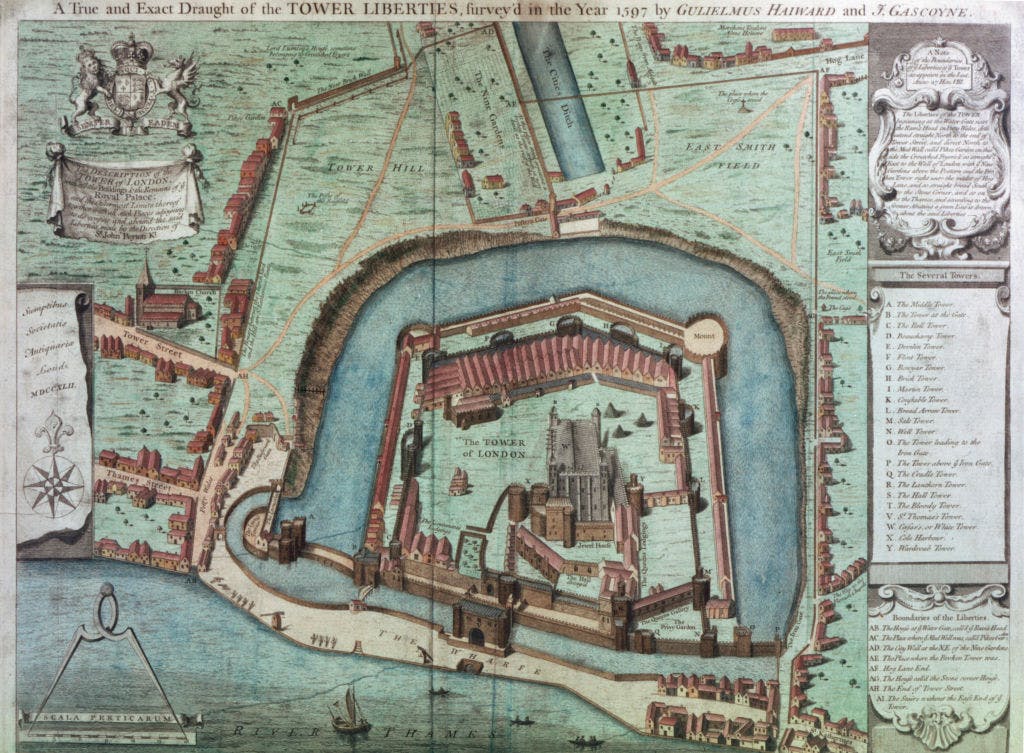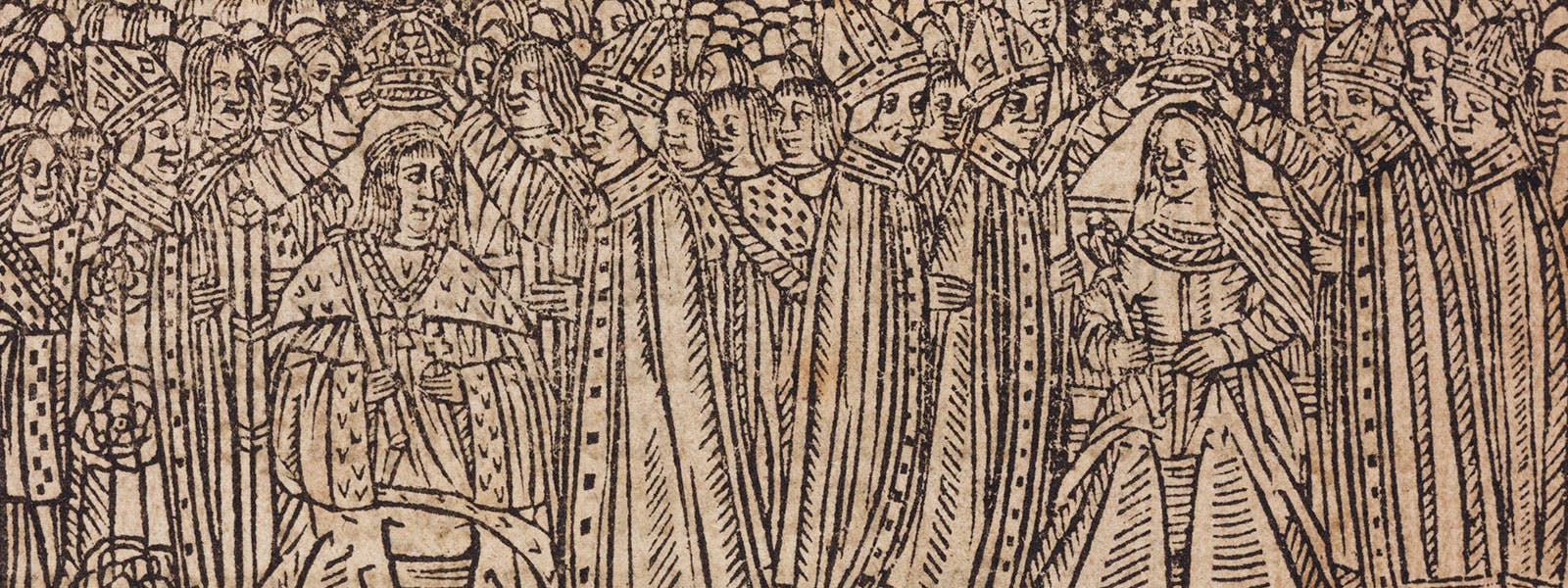
A Tudor servant and a royal scandal
Catalina of Motril was a former servant to Katherine of Aragon, first wife of Henry VIII. She might have held the key to one of Tudor history's biggest secrets.
In 1531, England and Spain held their breath while experts debated the annulment of Katherine and Henry's marriage. Henry was desperate for a quick resolution so he could marry Anne Boleyn and start trying for a male heir.
Henry’s lawyers argued that the marriage was invalid because Katherine had consummated (had sexual relations during) her previous marriage to Prince Arthur, his brother. The Queen was questioned in humiliating detail about her relations with Arthur, but the results were inconclusive.
The Spanish sought witnesses too. These included, 'Catalina, once the Queen's slave', who was said to have been 'present the first time the Queen and Henry were united as one'. But who was she?
Main image: 16th-century woodcut of the coronation of Henry VIII and Katherine of Aragon showing their heraldic badges, the Tudor rose and the pomegranate. Reproduced by kind permission of the Syndics of Cambridge University Library. From Stephen Hawes, 'A Joyfull Medytacvon to All Englande' (1509), printed Wynkyn de Worde, 4to, n.d.
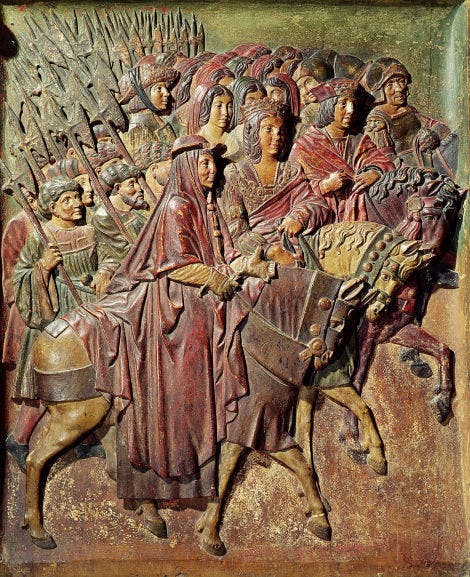
Image: Spanish relief depicting the entrance of Ferdinand II of Aragon and Isabella I of Castile into Granada in 1492. Felipe Vigarny / Bridgeman Images
A traumatic beginning
Catalina of Motril was born in Motril, Granada, on the beautiful, warm southern coast of Spain. Since the 13th century the territory had been a Muslim Emirate, but in 1492 it was taken by the Christian forces of Isabella of Castile and Ferdinand of Aragon during the Reconquista (Reconquest) of Granada.
Thousands of Muslim 'Moors' emigrated from their homes in Granada to North Africa. Others who could not escape, or who chose not to leave their homes, were regarded as spoils of war and enslaved. Catalina was likely among this number.
Catalina may have been named after Katherine of Aragon, her royal mistress, when she was enslaved in Spain.
Arrival in England
Katherine left Spain for England in August 1501 to marry Prince Arthur Tudor, first-born son of Henry VII and heir to the English throne. The Spanish contingent arrived in London on 12 November, welcomed by lavish pageants.
Two unnamed enslaved women were recorded as being among Katherine’s sizeable entourage — Catalina was probably one of them.
The Spanish must have made quite an impression on the citizens of London as they made their way through London's streets in their Iberian dress.
Two days after her arrival into London, Katherine and Arthur were married at Old St Paul's Cathedral. As a royal bedchamber servant Catalina would have prepared the bed where Katherine and Arthur spent their wedding night. According to a Spanish source, Catalina's tasks included 'making the bed and attend[ing] to other secret services of Her Highness’s chamber'.
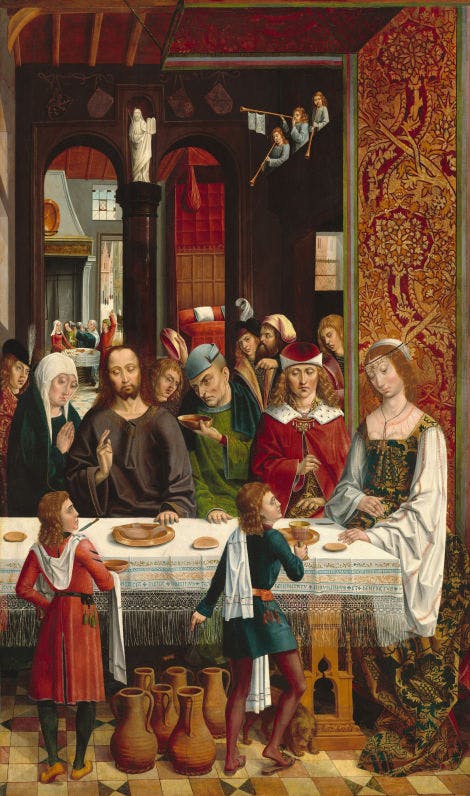
Image: Rich textiles and a marriage bed from the late 15th century in The Marriage at Cana (c.1495/1497). Samuel H. Kress Collection, Courtesy National Gallery of Art, Washington.
Servant of the bedchamber
The royal bed was the most intimate and important of royal objects. Privy to secrets and gossip, Catalina's position was as close to the top of domestic service as most servants could hope to rise. Katherine must have thought highly of Catalina’s discretion and loyalty.
Catalina's access to the bedchamber meant that she would have been unusually well informed about Arthur and Katherine's marital relations. It was this information that was sought out in 1531.
During the Tudor period, royal beds were lavish, complicated objects with roof canopies, hangings, curtains and valances. The Queen's bed included two pairs of sheets of fine linen, two long pillows and two square ones filled with down, a pane (blanket) of fine scarlet wool furred with ermine and bordered with velvet or cloth of gold.
One rich set of bedding belonging to Katherine of Aragon included a rich crimson cloth of estate (canopy) embroidered with the arms of England and Spain – perhaps the very bedding used on Katherine's wedding night.
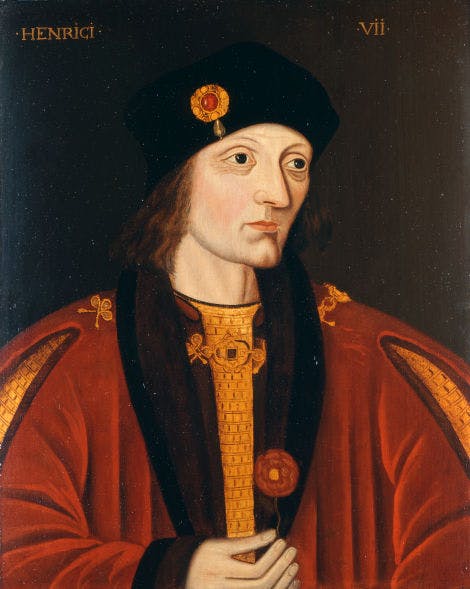
Image: Henry VII, by an unknown artist in the late 16th or early 17th century, based on a work of c.1490-1500. The Royal Collection © Her Majesty Queen Elizabeth II, RCIN 404743
Death of Prince Arthur
Just a few months into their marriage, Katherine and Arthur travelled to Wales, when they were hit by a mysterious illness. While Katherine recovered, Arthur died suddenly on 2 April 1502.
Henry VII was anxious not to lose his diplomatic ties between England and Spain and, after much negotiation, Katherine was betrothed to Arthur's younger brother Henry on 25 June 1503.
However, Prince Henry was yet too young to marry, and Katherine lived for the next five years with her household in London, including Catalina of Motril. Denied her full dowry, Katherine was forced to live off sporadic charity from Henry VII. She complained bitterly that she could not afford even to pay her servants and resorted to pawning her jewels.
During this time Catalina perhaps began to get used to the English climate and the bustling, grubby streets of London. No doubt she shared in Katherine’s sorrow, but change was afoot — Henry VII died on 21 April 1509. Catalina's mistress was to be Queen.
Katherine’s household were thrown into preparations for Katherine's wedding, and the coronation that was to follow.
Catalina at the Tower of London
On 11 June 1509, Katherine and Henry VIII were married at Greenwich, after which they would have taken to a marriage bed prepared by Catalina.
The coronation was to be an even more lavish affair lasting many days. It began with a stay at the Tower of London, two nights before the coronation ceremony in Westminster Abbey. Catalina would have spent the night with Katherine in the Inner Ward of the Tower, likely in the lavish new apartments built by Henry VII.
While lavish ceremonies were going on in other parts of the Tower, like the mysterious ceremony of the Knights of the Bath, Catalina would have been tending to her mistress. A real sense of excitement must have been growing for the procession to Westminster and of course the coronation itself.
Enslaved in all but name?
We do not know Catalina’s exact status in the service of Katherine of Aragon. Perhaps on arrival in England Catalina ceased to be considered enslaved. Slavery was not a recognised status in 16th-century England, and in 1569 the law courts would rule that 'that England has too pure an Air for Slaves to breath in'.
Sadly, Tudor England's aversion to slavery was not absolute or lasting. In 1562, a Plymouth merchant called John Hawkins set sail for West Africa where he traded in enslaved people, thereby laying the foundations for the English triangular slave trade. Among the investors in his later slave-trading missions were Elizabeth I and her Secretary of State William Cecil.
The only evidence we have for Catalina's position comes from Spanish records. Two anonymous 'esclavas' were listed in Katherine's household upon her entry to England (of which Catalina is likely to have been one). She was also referred to as 'Catalina, once the Queen’s slave' over 30 years later, after she had left Katherine's service.
Was she referred to in this way because she had ceased to be enslaved when she was brought to England, or because she had been freed to leave Katherine's service?
If Catalina was not paid for her service in England and was not free to leave without permission, then we might still regard her as enslaved. We know John Blanke was paid for his work, and even successfully negotiated a promotion and pay rise. Unfortunately, we don’t know whether this was ever the case with Catalina.
'Once the Queen's slave'
There is no evidence to tell us whether Catalina was ever paid for her service. Therefore, we don’t know if her enslaved status continued in England.
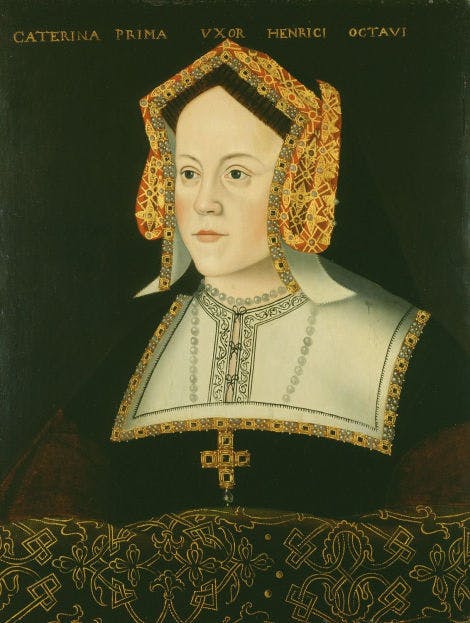
Image: Katherine of Aragon. Royal Collection Trust / © Her Majesty Queen Elizabeth II, RCIN 404746
Moments of great sadness
As a servant of the royal bedchamber, it is possible that Catalina was witness to the most difficult moments in Katherine's life. Queens were expected to provide lots of heirs, but childbirth was extremely dangerous and mortality rates were very high.
Pregnant noble women went through a period of confinement with their ladies and midwives for around one month preceding the birth. This uncertain and claustrophobic environment must have put an emotional strain on both mother and servants.
The Queen was frequently pregnant, but only her daughter Mary (the future Mary I) survived to adulthood. At least one son, named Henry, died aged less than two months. Witnessing and helping with these moments of sadness must have been a difficult part of Catalina's work.
Catalina returns to Spain
At some point, Catalina left Katherine’s service and returned to Spain. The records do not explain why or when.
We know though that Catalina married a crossbow maker called Oviedo. Henry was a great collector of arms and armour and it is possible that Oviedo travelled to the English court and that is how Catalina and Oviedo met.
The couple settled in Malaga, where they had two daughters. When Oviedo died, Catalina took her daughters back along the coast to Motril. She had finally made it back home.

Image: Modern-day Motril. © Jorge Stampa / EyeEm
Keeper of royal secrets?
We have no record of how Catalina responded to the Spanish delegation who came prying for salacious details of Katherine’s past. The absence of an official report might suggest she refused to comment; she had after all held a position which depended upon discretion and loyalty.
Her testimony might have been destroyed, or she may have died before the Spanish delegation reached her. As far as we know, she took her secret to her grave.
Despite the large gaps in our understanding, it is clear Catalina led a remarkable life. Catalina survived being enslaved and taken to an alien land, and then successfully negotiated the perils of the Tudor court.
Overcoming all this she returned to her homeland, raised a family and, as far as we know, died in her place of birth. Catalina was truly an extraordinary woman.
Suggested reading
For more information about Catalina of Motril and other people of colour in the Tudor period, please refer to the following books:
- Staying Power: The History of Black People in Britain by Peter Fryer (London, 2018)
- Black Tudors: The Untold Story by Miranda Kaufmann (London, 2019)
- Black and British: A Forgotten History by David Olusoga (London, 2016)
Browse more history and stories

John Blanke
A Black musician at the Tudor court
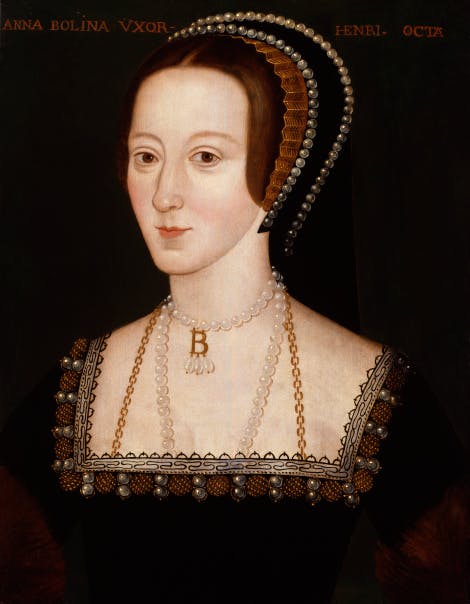
Anne Boleyn
How did Anne Boleyn become queen and why did Henry VIII execute her?
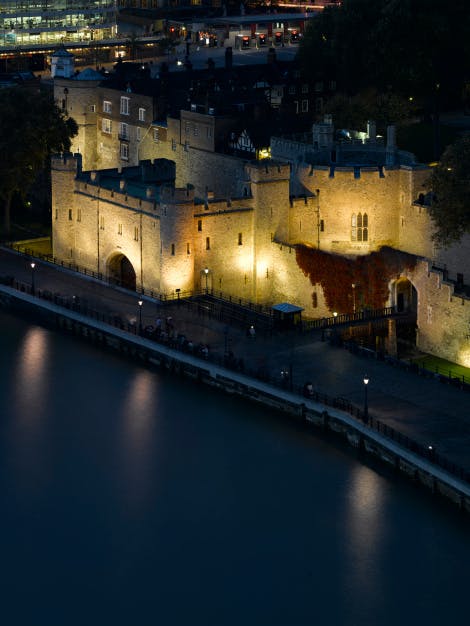
The story of the Tower of London
Iconic fortress, royal palace and infamous prison.
Explore what's on

- Things to see
Medieval Palace
Newly refurbished in May 2025, discover the colour, splendour, and people of the medieval Tower of London.
-
Open
- Tower of London
- Included in palace admission (Members go free)

- Things to see
Imprisonment at the Tower exhibition
Learn why people ended up as prisoners in the Tower of London, in the very rooms where some of them were held.
- Open
- Tower of London
- Included in palace admission (Members go free)

- Things to see
Tower Hill Execution Memorial
Complete your visit to the Tower of London at the Tower Hill Memorial, in what is now Trinity Gardens. Here, an estimated 125 people were executed– including many prisoners of the Tower.
- Daily
- Tower of London
- Free
Shop online

Shop Six Wives of Henry VIII
'Divorced, Beheaded, Died: Divorced, Beheaded, Survived' - this best selling range is as colourful as it is informative.
From £15

Shop Kings & Queens of England
Discover our informative and best selling range, inspired by the incredible history of the Kings and Queens of England.
From £4.99

Katherine Parr Decoration
Handmade fabric hanging decoration of Katherine Parr, King Henry VIII's six wife.
£13

